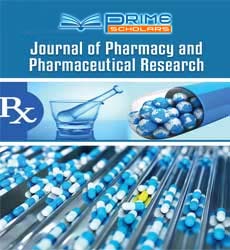Commentary - (2023) Volume 7, Issue 3
Revolutionizing Drug Delivery: The Microneedle Delivery System
Claus Nivi*
Department of Pharmacy, University of Federal, Brazil
*Correspondence:
Claus Nivi,
Department of Pharmacy, University of Federal,
Brazil,
Email:
Received: 29-Aug-2023, Manuscript No. IPIPR-23-18161;
Editor assigned: 31-Aug-2023, Pre QC No. IPIPR-23-18161 (PQ);
Reviewed: 14-Sep-2023, QC No. IPIPR-23-18161 ;
Revised: 19-Sep-2023, Manuscript No. IPIPR-23-18161 (R);
Published:
26-Sep-2023, DOI: 10.21767/ipipr.7.03.021
Description
The field of drug delivery has come a long way, with innovative
technologies constantly reshaping how medications are administered.
One such breakthrough is the Microneedle delivery system,
a remarkable advancement that offers numerous benefits over
traditional drug delivery methods. In this article, we will explore
the concept of microneedles, how they work, their applications,
and the potential impact they have on healthcare. Microneedles
are tiny, minimally invasive devices designed to deliver drugs, vaccines,
or other therapeutic substances into the body. These microscale needles are typically smaller than a millimeter in length
and are made of biocompatible materials such as polymers, metals,
or ceramics. Unlike hypodermic needles, which penetrate
deeper into the skin and can cause discomfort, microneedles usually
only pierce the top layer of the skin, the stratum corneum. This
minimizes pain and the risk of infection.
Microneedles work by creating tiny channels in the outermost layer
of the skin, allowing drugs or vaccines to be absorbed directly
into the bloodstream. They can be applied using various methods,
such as as patches, rollers, or injections, depending on the specific
application. The key advantage of microneedles is their ability
to bypass the body’s natural barriers, like the stratum corneum,
which can be a significant obstacle for the effective delivery of certain
drugs. Microneedle patches have shown tremendous potential
in vaccine administration. They offer a painless and convenient
alternative to traditional needle injections, making vaccinations
more accessible and less intimidating, especially for children and
individuals with needle phobias. Microneedles have the potential
to revolutionize diabetes management by enabling pain-free and
continuous glucose monitoring. They can be used to extract small
amounts of interstitial fluid for glucose level monitoring, reducing
the need for frequent blood tests. Microneedling has gained popularity
in cosmetic and dermatological procedures. Microneedle
rollers and pens create micro-injuries in the skin, stimulating collagen
production and improving the absorption of skincare products,
resulting in rejuvenated and healthier skin. Microneedles are
also being explored for delivering a wide range of drugs, including
insulin, pain medications, and contraceptives. Their ability to target
specific areas of the body and provide controlled release of
drugs can enhance therapeutic efficacy and reduce side effects.
Microneedles are minimally invasive and typically painless, making
them a patient-friendly option for drug delivery. The tiny, shallow
punctures created by microneedles minimize the risk of infection
compared to traditional needles. The pain-free and user-friendly
nature of microneedles can enhance patient compliance, particularly
in long-term treatment scenarios.
While the Microneedle delivery system shows great promise, it
is not without its challenges. The production of microneedle devices,
their stability, and scalability are areas that require ongoing
research and development. Regulatory approval and widespread
adoption will also take time. However, as the technology continues
to evolve, microneedles have the potential to transform the
landscape of drug delivery. They could improve patient experiences,
enable new treatment options, and ultimately contribute to
better healthcare outcomes. The Microneedle delivery system is
a groundbreaking technology that has the potential to revolutionize
the way we administer drugs, vaccines, and other therapeutic
substances. With its minimally invasive approach, painless application,
and numerous advantages, microneedles offer a promising
path toward safer, more effective, and more convenient healthcare
solutions. As research and development efforts continue, we
can look forward to a future where microneedles play a significant
role in enhancing medical treatments and improving patient experiences.
Acknowledgement
The author is grateful to the journal editor and the anonymous
reviewers for their helpful comments and suggestions.
Conflict Of Interest
The author declared no potential conflicts of interest for the research,
authorship, and/or publication of this article.
Citation: Nivi C (2023) Revolutionizing Drug Delivery: The Microneedle Delivery System. J Pharm Pharm Res. 7:021
Copyright: © 2023 Nivi C. This is an open-access article distributed under the terms of the Creative Commons Attribution License, which permits unrestricted use, distribution, and reproduction in any medium, provided the original author and source are credited.

